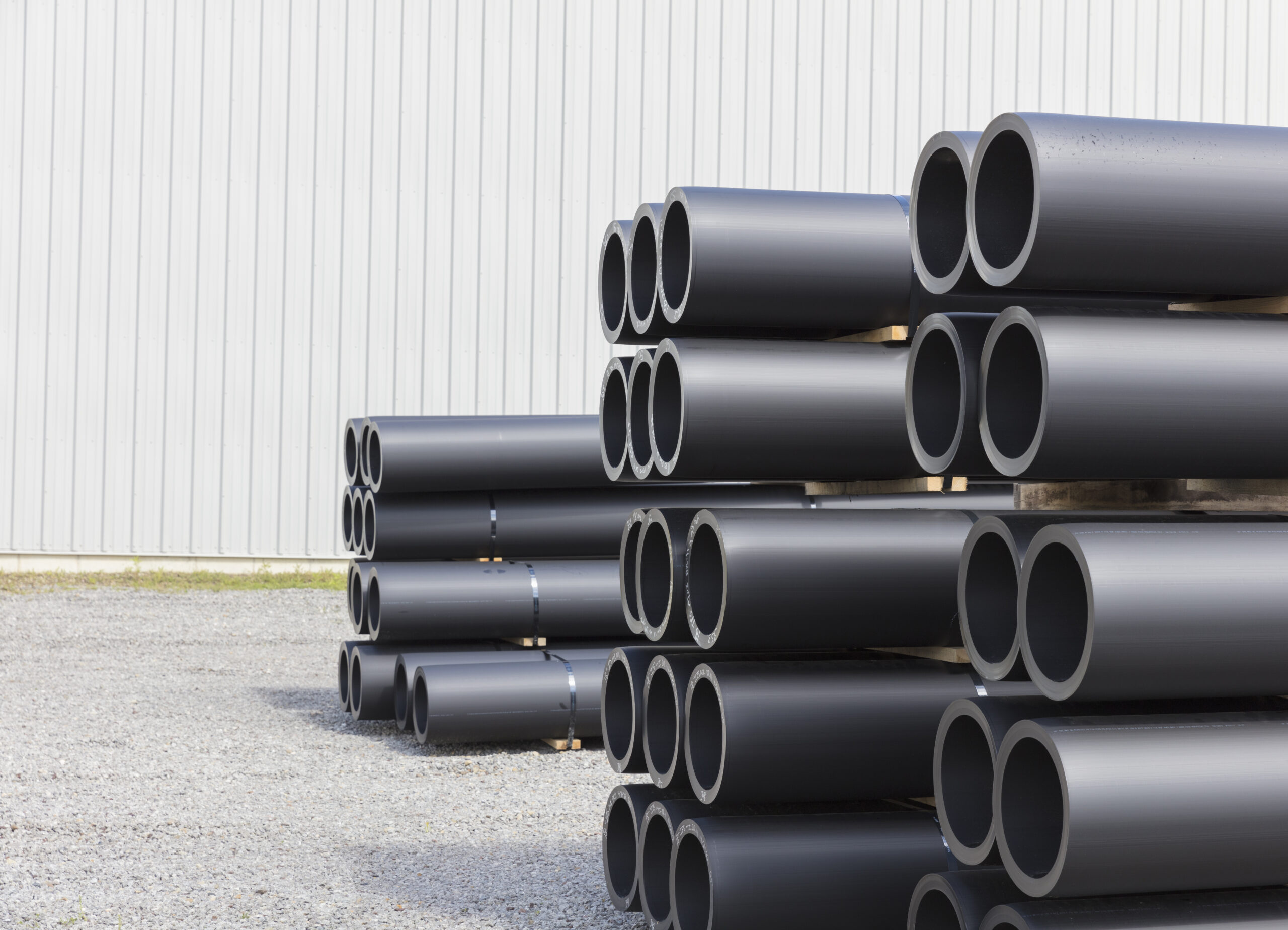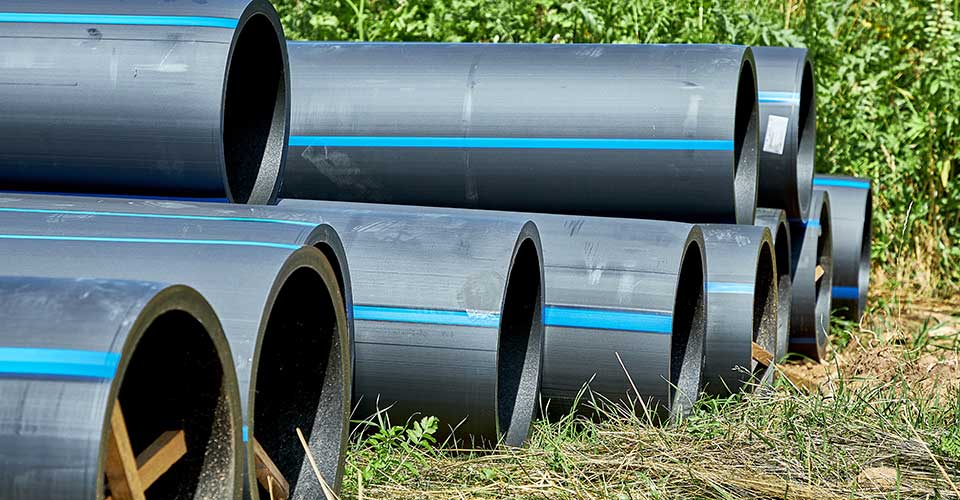The Role of Pipe Manufacturing Midland TX in Building Infrastructure
The Necessary Steps for Effective Setup of HDPE Pipeline in Your Next Project
Effective installation of HDPE pipeline needs mindful preparation and implementation. Secret steps consist of examining task requirements, preparing the website, and selecting appropriate joining methods. Each phase plays an important duty in making certain the integrity and efficiency of the pipe. Understanding these necessary actions can substantially influence the general success of the project - Pipe Manufacturing Midland TX. Nevertheless, the nuances of each action might hold the key to conquering usual obstacles encountered during installment
Recognizing the Conveniences of HDPE Pipeline
High-density polyethylene (HDPE) pipe uses many advantages that make it a favored option for various applications. Its high resistance to deterioration and chemicals warranties resilience in demanding environments, considerably extending the lifespan of installations. Additionally, HDPE's flexibility enables for much easier setup, especially in challenging surfaces, as it can flex without breaking. The light-weight nature of HDPE pipeline simplifies transportation and handling, reducing labor prices throughout installment.
HDPE pipe is recognized for its low rubbing coefficient, which boosts liquid flow and minimizes power intake. Its smooth building lowers the danger of leakages, adding to much better source monitoring and environmental management. On top of that, HDPE is recyclable, straightening with sustainable practices and decreasing ecological influence. Overall, the mix of toughness, versatility, and eco-friendliness makes HDPE pipeline an exceptional option for a large array of tasks, from water circulation to commercial applications.
Preparation Your HDPE Pipeline Installment
When intending an installment of HDPE pipeline, mindful factor to consider of several key elements is essential to safeguard an effective task. Task managers need to examine the certain demands of the pipe, consisting of the meant use, circulation rates, and environmental conditions. Comprehending these parameters will lead the choice of proper pipe measurements and material grade.
Next off, timelines need to be established, factoring in procurement schedules and any kind of prospective delays. Control with local authorities for permits and governing compliance is likewise crucial. Furthermore, a thorough spending plan must be prepared, including all prices related to products, labor, and machinery.
It is important to involve a qualified team experienced in HDPE pipe installation. Their experience will aid alleviate threats, assurance adherence to industry requirements, and inevitably add to the task's success. Extensive preparation lays the groundwork for a smooth setup procedure and resilient efficiency of the HDPE piping system.
Preparing the Site for Installation
Appropriate website preparation is important for the successful installment of HDPE pipeline. Prior to setup begins, the site should be completely analyzed to guarantee it satisfies all necessary requirements. This consists of evaluating the ground for existing frameworks, utilities, and prospective dangers that can restrain the installation process.

Correct elevation and positioning should be established to preserve a constant slope for drain objectives. Proper drainage around the setup site is likewise essential to stop water buildup, which can lead to problems down the line.
Techniques for Joining HDPE Pipelines
Attaining a trusted link in between HDPE pipes is necessary for making sure the stability and durability of the setup. Different methods exist for joining these pipes, each matched for different job demands. Combination welding is among the most common methods, making use of warm to bond the pipeline finishes together, creating a smooth and sturdy link. This method can be more classified into outlet combination and butt combination, depending on the pipe arrangements.
Mechanical installations are another option, employing clamps and threaded adapters to join areas of HDPE pipeline. While typically faster to set up, they may call for extra upkeep gradually. Electrofusion is a specific approach that includes utilizing electric present to heat and fuse the pipelines via specifically designed installations, guaranteeing a solid bond. Picking the ideal joining strategy is essential, as it directly influences the total performance and dependability of the HDPE piping system in the desired application.
Checking and Inspection of Installed Pipes
The screening and examination of installed HDPE pipelines are crucial to guaranteeing their performance and long life. This process includes aesthetic inspection methods, pressure screening techniques, and leakage discovery procedures to identify potential problems. By using these methods, experts can verify the honesty of the installment before it is placed right into use.
Aesthetic Evaluation Techniques
Utilizing reliable aesthetic inspection strategies is vital for guaranteeing the stability of mounted HDPE pipes. Inspectors ought to systematically take a look at all visible sections of the pipeline to identify any signs of damage, imbalance, or inappropriate installment. Trick signs to examine consist of joint integrity, surface area abnormalities, and connections. Inspectors may make use of devices such as magnifying glasses or cameras to boost visibility and detail. It is important to look for signs of environmental stress and anxiety, such as buckling or excessive bending, which can endanger performance. Consistent paperwork of findings enables for tracking adjustments gradually and helps guide needed repairs. By adhering to well established aesthetic assessment methods, project teams can notably lower the danger of future failings and guarantee long-lasting reliability of the piping system.
Stress Checking Methods
Visual evaluation functions as an initial step, yet it is not sufficient by itself to guarantee the performance of installed official statement HDPE pipes. Stress screening methods are essential for ensuring the honesty of these systems. Usually, hydrostatic screening is utilized, where the pipelines are loaded with water and subjected to stress degrees above the designated operating stress. This method aids identify weak points or possible leaks. Pneumatic screening can additionally be used, although it lugs greater threats due to the compressibility of air. Regardless of the approach chosen, adhering to market criteria and security procedures is crucial. After carrying out stress examinations, complete documents is necessary to verify the results and verify that the installment fulfills all operational demands prior to continuing to the following stage of the task.

Leak Detection Procedures
How can one guarantee that installed HDPE pipelines are cost-free from leaks? Reliable leak detection treatments are crucial to protect the stability of the system. Aesthetic inspections need to be executed, looking for indications of water accumulation or soil erosion around pipe joints. Following this, stress testing can validate the system's toughness. An usual method is the hydrostatic test, where water is introduced under stress, keeping an eye on for drops that show prospective leakages. Furthermore, advanced technologies, such as acoustic sensing units or infrared thermography, can identify leaks that might not show up. Regular surveillance and maintenance more add to the durability of HDPE pipelines, ensuring they continue to be leak-free throughout their operational life expectancy. Proper paperwork of these treatments is necessary for compliance and future reference.
Upkeep Tips for Long-Term Performance
To ensure the long life of HDPE pipes, developing a regular assessment schedule is crucial. This positive strategy enables the very early discovery of potential problems, reducing expensive repair services. Additionally, carrying out correct cleaning strategies will assist preserve peak performance and stop buildup that can impact capability.
Normal Examination Schedule
HDPE pipes are known for their sturdiness and resistance to deterioration, developing a normal evaluation timetable is important for guaranteeing their lasting efficiency. Regular examinations help identify prospective issues such as leaks, joint stability, and environmental impacts that might influence the pipe's performance. It is recommended that inspections take place at the very least biannually, or much more regularly in atmospheres with severe problems. American Plastics HDPE Pipe Manufacturing. During these assessments, aesthetic checks need to be performed to identify indicators of wear or damages. Additionally, using modern technology such as ultrasonic screening can offer further insights into the pipeline's condition. By applying an organized evaluation timetable, job managers can proactively address troubles, thus extending the life expectancy of HDPE pipes and maintaining system efficiency
Appropriate Cleaning Techniques
Appropriate cleaning methods play a crucial role in keeping the long-lasting efficiency of HDPE pipes. Normal cleaning avoids the build-up of debris, debris, and biofilm, which can lead to obstructions and look at here decreased circulation performance. Operators needs to utilize approaches such as high-pressure water jetting or foam cleaning to effectively get rid of impurities without damaging the pipeline surface. It is important to stay clear of using severe chemicals that might deteriorate HDPE product. Additionally, arranged upkeep checks need to include visual examinations for any indications of wear or damage. Effectively trained workers need to execute these cleaning processes, guaranteeing compliance with security and ecological laws. By implementing these practices, the life underground water line installation expectancy of HDPE pipes can be substantially expanded, making sure ideal performance throughout their operational life.
Frequently Asked Questions
What Are the Environmental Impacts of HDPE Pipe Production?
The ecological influences of HDPE pipeline manufacturing consist of greenhouse gas discharges, energy usage during manufacturing, possible plastic pollution, and obstacles in reusing. Nonetheless, HDPE's long life and resistance to rust can alleviate some ecological worries.
Just How Does HDPE Pipe Compare to Various Other Materials?

What Tools Are Needed for HDPE Pipe Setup?
Crucial tools for HDPE pipe setup include a combination maker, pipe cutters, shovels, measuring tape, and safety equipment. Appropriate equipment assurances effective, safe handling and installment, adding to the project's overall success and integrity.
Are There Any Kind Of Details Regulations for HDPE Pipe Installment?
Details regulations for HDPE pipeline installment vary by region, frequently regulated by local, state, or government codes. Compliance with these policies assurances security, environmental management, and capability, making adherence important for effective job results.
Can HDPE Water Lines Be Recycled After Usage?
Yes, HDPE pipes can be reused after use. Their polycarbonate nature enables reprocessing, making them appropriate for recycling right into brand-new items. This sustainability element adds to ecological conservation and advertises round economic climate practices in construction.